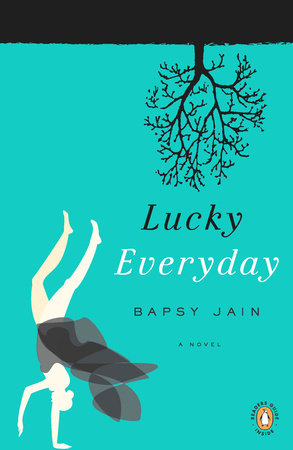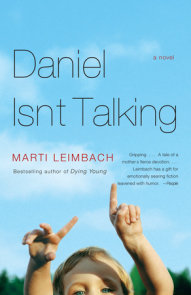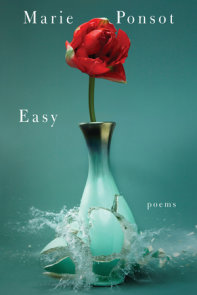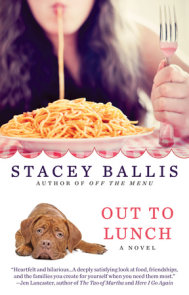READERS GUIDE
Questions and Topics for Discussion
INTRODUCTION
“We are not human beings seeking spiritual experience, but spiritual beings undergoing a human experience.” —Lucky Everyday
Not long ago, Lucky Boyce had every reason to believe that she had been aptly named. After her big promotion at Paterson & Company in New York, the lovely Lucky was wooed and won by the dashing and highly eligible Vikram Singh. He whisked her off to Bombay and marked her as his bride with a custom-made, four-carat, heart-shaped diamond ring. Lucky felt as if the world were at her feet. Until Vikram forcibly—and without warning—threatened to annul their marriage, which ends in divorce. Lucky was stripped of everything she cared about: husband, wealth, and her nascent career as a jewelry exporter. Completely unmoored and seeking refuge in New York with her old friends Alec and Susan, Lucky has no inkling that her life is about to take a dramatic new turn. But will she be able to open herself up to it?
It is Alec who convinces Lucky to volunteer as a yoga instructor at the state penitentiary. The men’s aggressive posturing intimidates her at first, but Lucky’s no-nonsense attitude—and her ability to do one-handed push-ups—wins their grudging respect. Even more surprising, Lucky finds students like Rooster and Steve who are willing to put aside their preconceived notions and open themselves up to the truths that yoga offers. Sharing this knowledge with others that truly appreciate it brings Lucky closer to Shanti—the yogi back in Bombay who rescued her in the darkest days of her failed marriage—and begins to restore her shaken self-confidence.
While teaching yoga enriches her soul, her pockets remain empty. With little else besides her flamboyant engagement ring, Lucky decides to collect on a few debts from her days as a businesswoman running a firm for Vikram’s family. The owner, Mike Lockwood, is a bit of a shady character but he respects Lucky’s abilities and agrees to pay her back if she helps him turn his own ailing business around. She accepts and finds herself enjoying both the camaraderie and the challenge.
Yet, Lucky is hardly settled in her new life when she is brutally mugged and winds up with a broken wrist that might be paralyzed. While Mike and her old friends rally around her, Lucky is beset by one calamity after another only to find herself at the center of a web of lies that may spell complete ruin. Lucky wonders what she has done to deserve such ill fortune but—reflecting on Shanti’s teachings—realizes that it is she alone who has the power to break free.
In her charming and utterly original debut novel, Bapsy Jain juxtaposes Lucky’s current adventures with her carefree single days and the decay of her marriage. Part women’s fiction, part thriller, and part spiritual parable, Lucky Everyday is a wise and wondrous meditation on one almost-enlightened every woman’s journey through this life.
ABOUT BAPSY JAIN
Bapsy Jain is an entrepreneur and educator and divides her time between Singapore, Dubai, and Bombay. Jain has stood on her head many times in the course of the ten years it has taken to complete this novel. She is married with two sons.
A CONVERSATION WITH BAPSY JAIN
Q. Vikram and his mother/aunt attribute many of the problems in their marriage to the fact that Lucky is Parsi rather than Rajput. How important is the caste system in modern India?
Vikram and Lucky’s marriage is an intercommunity marriage. They belong to different religious communities. That is different from the caste system, which is based on a hierarchy of castes within one religion, Hinduism. Still, both the caste system and intercommunity relations share some commonalities. The caste system has been in existence in India through many centuries of history, and to some extent the remnants exist even today. But here let’s look at Vikram and Lucky’s intercommunity marriage. There’s a vast difference between attitudes toward intercommunity marriages in different parts of India. For example, in a traditional rural setting, issues of religion and caste are still hide bound. In the vast urban areas where there are multi communities, multi castes and multi cultures all sharing the same environment, there is less emphasis on a person’s traditional background, and Western values do come into play. Many young people of different religious backgrounds meet in college and have relationships that may eventually lead to marriage. Yes, grandparents may object initially, but they are usually won over.
The system does still affect lives, though it is losing ground to modern realities and conditions.
My aim in the novel, however, is to show how the caste system stems in a way from an aspect of human nature: a possessive mother who wants to be in the center and in control of her son’s life and so resents an independent daughter-in-law. Had Vikram married as per Geeta’s wishes she would have completely dominated her daughter-in-law who would have had to toe her mother-in-law’s line. This relationship, this upmanship between mother-in-law and daughter-in-law is relevant even in today’s society.
Q. What are there major differences between contemporary Indian novels and American novels? Who are some of your favorite writers—of any period and in any language—and why?
I think contemporary Indian novels generally reflect an extremely complex society that has shaken off the struggles of colonial experience but now has to find its moral voice. America’s history is more recent, and perhaps contemporary American novels reflect the success of America as a nation and the creation of an individualist culture, where people are fiercely proud of their freedom. At the same time there seems to be a search for greater meaning that often plays out in personal relationships.
The other difference between contemporary Indian and American novels is one of style and tone. The style and tone tend to reflect the culture and background of the novelist. The theme and point of view are generally far apart because of the different exposures and influences of the novelist. Similarly characterization and plot differ again on account of different thinking and circumstances.
The Indian author does dwell in some way on basics and philosophy as this is a poorer country where people lay emphasis on traditional and religious beliefs as an antidote to their powerlessness, whereas American novels deal more with emotions and conditions—and sometimes the emptiness of materialism—that relate to America.
I like and read a variety of novels, and Eckhart Tolle, Khalil Gibran, Paulo Coelho, Khaled Hosseini, Elizabeth Gilbert, Amitav Ghosh, and V. S. Naipaul are among my favorites. I find we share a common spirituality and essence which appeals.
Q. How much of Lucky—if any—is based on you?
Lucky is a woman who shares my history as a Parsi. Like all women we struggle to find who we are, our values and beliefs, and what is free will and destiny. I may have reacted differently if I had experienced what she does, but sharing her story has given me tremendous courage. I have always felt her presence within me, and the decisions she makes instinctively come out of a sense of that presence. On the level of the immediate plot and events, I studied for chartered accountancy in London and based her professional life on my own experience. I also enjoyed practicing yoga for several years.
Q. You live in Singapore, Bombay, and Dubai, yet your rendering of New York City is faultless. Have you spent much time there?
Yes, I have lived and worked in Manhattan and visit the United States frequently. I have a lot of close ties in the way of family and friends there.
Q. Lucky Everyday transcends many genres and offers a truly unique heroine. What was your inspiration?
I’ve come to the conclusion that there are many layers to our experiences. And that’s what I wanted to relate in Lucky Everyday. On one hand, Lucky could be victimized by the way she is treated by Vicki’s family. And this would ring true with women in India. But that’s not the end of it. Setbacks can be turned around. They leave their mark on Lucky, but she refuses to let them destroy her. Again, this is something that grew from within as I captured her thoughts and actions in words. In the end, Lucky lives and is empowered as we, women, are empowered by experiencing similar struggles.
What inspired me to write was the belief that Lucky Everyday could open minds to a new perspective, which could change thoughts, actions, and lives.
Q. Although this novel was originally published in India, you wrote it in English—why? Will it be translated into any Indian languages? How do you think it will be received?
I grew up speaking English and for me it is my first language. Though I do speak other languages I do not possess the fluency to write a novel in any other language.
Penguin India has been my primary publisher and the novel has been well received in India in English. I am pleased that the novel will be published and distributed by Penguin worldwide because this novel has universal appeal and draws on cultures of the East and West. In today’s world many people can relate to this in their own lives. I’m sure it will be translated into other languages later.
Q. It is incredibly brave of you to show your main character having an abortion. What is the prevalent attitude towards abortion in India and what do you think of the controversy it arouses in the United States?
In India, abortion is regarded as a personal decision. It is not the subject of public discourse or the subject of religious or political controversy. In Lucky’s circumstances it’s a complex decision. She wants to protect Amay, who remained loyal to her even though she had hurt him before. She feels that it would throw a loop in his life, which is too great a price for him—and his family—to pay. There’s something in her that reaches out intuitively to shield him even though she knows she will not marry him. She also grapples with the issue of the quality of life she can offer a child who is born with severe physical challenges. The potential physical and emotional suffering for the child and for Amay and herself weigh into her decision.
In the United States, abortion is a publicly controversial and decisive issue. But I feel that abortion is a very personal and deeply felt decision for a woman to make. It should be based on her own and her family’s views and circumstances. Rights and responsibility go hand in hand and it doesn’t seem right for anyone to impose their views—or judgment—on any woman.
Q. What is the most important aspect of the novel that you fear an American audience may miss?
The symbolism in the novel. The message the novel transmits to the readers is that it is internal engineering that gives happiness, not external trappings. The novel symbolizes in many ways that we do not choose this kind of life—our family, our circumstances, and in many cases, the outcomes of our decisions. This kind of life chooses you. It does this at various levels, and the audience may not comprehend this at all its levels. The story of the blind pilgrim embodies this. He searches futilely and yet in the end, the search is what he blindly sought.
Lucky’s choices are hers, but buried somewhere in those choices are circumstances that are far beyond her choice or control. Examples would be her marriage of choice but she has no choice in the influences that change the values of her husband; again her choice of joining Mike in business and the deception she faces as a result of that choice. This shows we do not choose our kind of life.
I hope that an American audience will see Lucky Everyday as a story on many levels. This is a story about women’s experiences anywhere. It could be India or America. The American audience must see this as more than just a glimpse of a woman from another culture. It’s her realization and understanding of being removed from her experiences, looking at them, and moving—growing—along with them that is the heart of the story.
Q. Has there been a Shanti in your life?
Almost unconsciously, Shanti in my life has been a force that came from people I grew up around. When I picture her within, as a person, in terms of her physical being, she is based on my dear maidservant, Janki, who looked after me from childhood until I was about twelve years old. But it’s not that she expressed to me verbally things that Shanti says to Lucky. It was part of the way she lived. She struggled without any outward display of struggle and she had a sense of detached acceptance that I really understood only years later in my adult life. There have been other people I grew up around, whose lives and actions have touched me and a part of them are woven into Shanti.
Q. What do you like about standing on your head?
Standing on my head allows a different view, a different perspective of circumstances and events. One has to flow in tune and along with life and if your world is turning upside down you also need to stand on your head to get the right view!
Q. Your novel has an incredible surprise ending. One would be hard-pressed to call it happy but—unlike many novels’ pat endings—it is extremely satisfying. Did you initially intend for Lucky’s journey to end this way?
I did intend for the novel to end this way. To me Lucky is empowered and will be able to face life with vigor as she no longer sees herself as a victim. She is able to live her life and is not drawn into it, she witnesses her life from a distance and can see things as they are—events that come and go.
After all she goes through in the novel, it was just not true to arrive at a place where Lucky lived “happily ever after.” Again, the ending came to me as a place that the reader has to be a part of. They have journeyed with Lucky and shared her inmost turmoil. And she holds on to something inside her in the end. But in the real world that is the something we all seek; an understanding that leads to happiness within despite happenings on the periphery. All of us inwardly hope to find joy amid sorrow!
Q. What are you working on now?
I am working on a sequel, Night Vision.
DISCUSSION QUESTIONS






















